Intelligent Lift Trucks, Smarter Business
In step with automotive innovations, lift trucks are gradually moving toward autonomy.
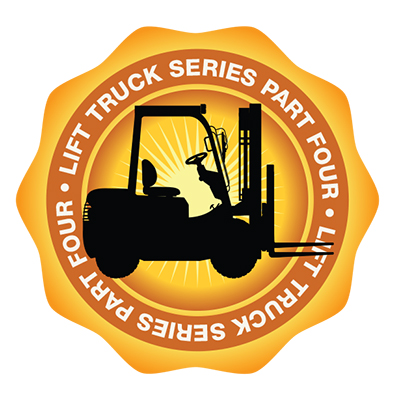
It’s hard to imagine living the way we did before the supercomputers in our pockets replaced our corded rotary phones, laminated maps, encyclopedias and camera film. We’re still waiting for jet packs, but the very near future promises self-driving cars, virtual reality vacations and same-day delivery of consumables for our 3D printers. These innovations are coming quickly, but they don’t happen all at once. Chances are, by the time we’re napping comfortably behind the wheel (or touchscreen), gas stations will be the same sort of hazy memory that phone booths are now.
The latest trends in lift truck automation point to a dramatic departure from their relatively consistent look and feel during the century since their introduction. But there’s no light switch to flip that suddenly results in flawless picking performance from unmanned forklifts with robotic arms. More accurately, the current trend centers on semi-automation, where a lift truck is still accompanied by a human but has the smarts to navigate and improve safety while freeing the operator from non-value-added tasks like, well, operating it.
As with any innovation, the low-hanging fruit comes first, and for lift trucks that’s horizontal travel. However, even that functionality in many cases has proved much too complex for a lift truck original equipment manufacturer (OEM) to develop from scratch. Instead, some have partnered with experts in automatic guided vehicle (AGV) hardware and software. Examples include Toyota Material Handling’s collaboration with AutoGuide, The Raymond Corp.’s work with Seegrid and a formal agreement between Hyster-Yale Group, the parent company of Yale Materials Handling Corp., and Balyo. A growing group of systems integrators are also coordinating the modification of standard forklifts with automated capabilities.
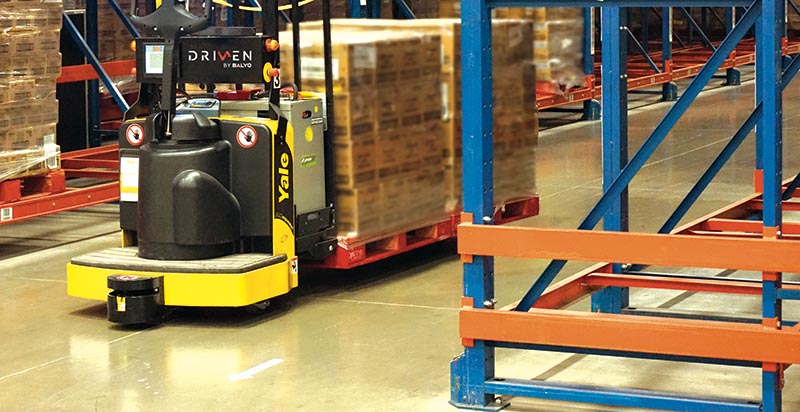
Remote-controlled pallet jacks enable the operator to stay focused on picking, but require high pick density.
To be clear, this technology is not merely a laboratory project or wishful thinking, and it’s already in use in applications across the globe. The momentum of the market likely contributed to Toyota’s decision to launch Toyota Advanced Logistics Solutions (TALS), a new business division that subsequently acquired Bastian Solutions and Vanderlande, a global intralogistics specialist with annual revenues of more than $1 billion. Tim Meyer, Toyota Production System solutions and AGV product manager for Toyota Material Handling U.S.A. (TMHU), says the trend will continue.
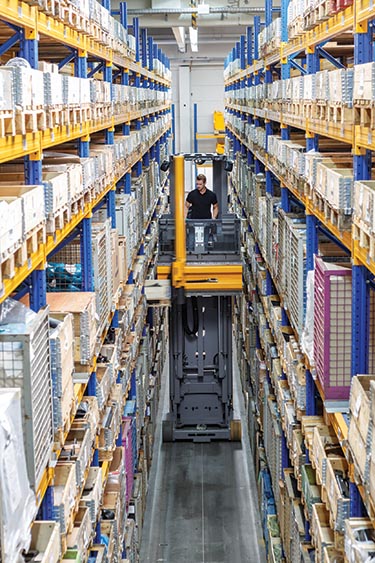 “Not long ago, the simple math was 2,000 AGVs sold each year, as opposed to 200,000 lift trucks. At 1% of the market, you didn’t see enough interest from big manufacturers in this direction. It’s too complex, expensive and customized,” Meyer says. “Now, I feel like even in the custom space, there’s been enough customer interest and enough start-ups that have spurred companies like Home Depot, Whirlpool and John Deere to explore and deploy the technology. Customers sent a clear message: ‘If you can’t bring this to the table, we will have to talk to someone else.’ Now the OEMs are jumping into the game more, with acquisitions and investment into new product development. It’s a natural progression, and I believe going forward we’ll see a significant percentage of that 200,000 being autonomous to some degree.”
“Not long ago, the simple math was 2,000 AGVs sold each year, as opposed to 200,000 lift trucks. At 1% of the market, you didn’t see enough interest from big manufacturers in this direction. It’s too complex, expensive and customized,” Meyer says. “Now, I feel like even in the custom space, there’s been enough customer interest and enough start-ups that have spurred companies like Home Depot, Whirlpool and John Deere to explore and deploy the technology. Customers sent a clear message: ‘If you can’t bring this to the table, we will have to talk to someone else.’ Now the OEMs are jumping into the game more, with acquisitions and investment into new product development. It’s a natural progression, and I believe going forward we’ll see a significant percentage of that 200,000 being autonomous to some degree.”
The basics
Now is a good time to become familiar with a few acronyms that might soon pop up in lift truck specifications: LIDAR, for light detection and ranging, and SLAM, for simultaneous localization and mapping. These components are among the most popular in automotive and military uses of autonomous navigation, the growth of which has seen component prices decrease by 80% or more in a few years. In a competitive market, it’s important that automated lift trucks use affordable or conventional parts when possible. This enables a lower equipment cost, but is also critical to ensure technicians can efficiently service the equipment.
“Technicians can’t just dive into the electronics of an entirely different class of technologies,” says Brian Markison, senior director of sales and marketing for UniCarriers Americas. “There’s no way to rapidly get that level of expertise into the field, and, in any case, software is not our core competency. Blending with other organizations for a total solution is really where it’s heading. There will be closer collaboration to create a kind of ‘plug-and-play’ opportunity. The forklift technician can then simply swap a box instead of diagnosing and repairing, which makes upkeep of trucks more effective and minimizes downtime.”
Because standard lift trucks have already been steadily transitioning from things like DC to AC motors and from mechanical to electronic controls, the stage was already nicely set for autonomous capabilities.
“As we build the base forklift that might later be outfitted with autonomous technology,” Markison says, “our perspective is to do all we can to ensure control mechanisms are digital so it’s easier to connect and integrate everything from steering to braking to lifting and lowering.”
This sort of built-in preparedness for automation is also behind Crown’s QuickPick, a solution for low-level order picking that consists of integrated lasers on the forklift and a wearable remote control for the operator. Instead of getting on and off equipment between each pick, the operator pushes a glove-mounted button and the forklift advances. Data from the lasers helps automatically avoid obstacles and maintain a safe distance from rack, while the picker keeps picking. The elimination of four of the nine tasks each pick requires can save five seconds per pick and improve productivity by up to 20%, according to Jim Gaskell, director of global technology and business development for Crown.
“There’s no infrastructure or project costs for this solution, but the biggest obstacle is to get customers to optimize processes,” Gaskell says. “This means they need to get pick densities down. If the picker has to travel more than four full bays, he might as well get back on the lift truck.”
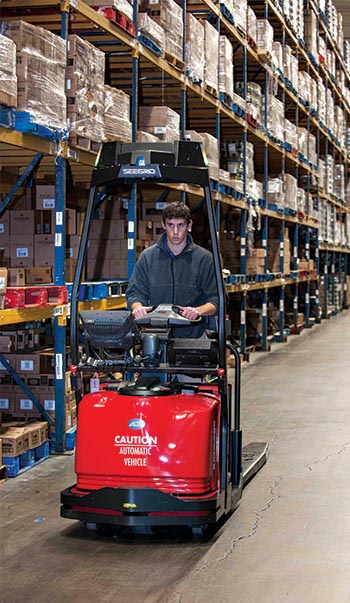 Initially launched in 2009, Jungheinrich’s Warehouse Navigation system is another example of how seemingly simple tasks can yield big savings when equipment is semi-automated. Primarily used in very narrow aisle (VNA) applications, the technology uses floor-embedded sensors to give the equipment a sense of its location in the aisle. By managing speed, accounting for overhead obstructions like HVAC, and positioning the forks precisely in front of target locations, the system can improve pick efficiency by 25%.
Initially launched in 2009, Jungheinrich’s Warehouse Navigation system is another example of how seemingly simple tasks can yield big savings when equipment is semi-automated. Primarily used in very narrow aisle (VNA) applications, the technology uses floor-embedded sensors to give the equipment a sense of its location in the aisle. By managing speed, accounting for overhead obstructions like HVAC, and positioning the forks precisely in front of target locations, the system can improve pick efficiency by 25%.
“The operator is always the smartest processor on the machine,” says Chad Munger, product line manager of warehouse products for Mitsubishi Caterpillar Forklift America, which plans to launch a Jungheinrich AGV solution in North America in 2018. “But it’s tiring to always have to think about where the end of the aisle is and fork position. Semi-automation assists the operator, making the job easier and safer.”
Munger also describes a new feature that helps account for uneven floors. Even the best floors have some amount of waviness, he says. And because the equipment has no suspension, those small waves can translate to big movement at the top of an extended mast. The new dampening system, mounted to the load handler of a turret truck like a shock absorber, counteracts any rocking motion. Munger says this allows the operator to control speed much better without having to slow down until the rocking stops. Munger’s example is a mechanical, not electronic, solution, but it highlights the power of technology to remove operator concerns. Taken together, a suite of semi-automated features enables even a temporary operator to rapidly become efficient regardless of experience, Munger says.
The partnership
While forklifts gradually evolved to include their own central processing units (CPU) and electronic controls, companies like Balyo were developing the ability to navigate inside a building with natural guidance using SLAM.
Balyo is a software robotics company with an entirely different philosophy than an equipment manufacturer, says Jeff Huerta, vice president of sales and marketing in the Americas for Balyo. So, instead of developing its own AGVs, Huerta says the company began to modify a standard lift truck. “Trucks already have electronic controls,” he says. “So we met in the middle.”
The No. 1 reason a customer calls, Huerta says, is because they can’t find labor. Unemployment is at record lows and first-year employee turnover averages 36%. Hearing the same concern from his customers, Lou Micheletto, manager of integrated solutions for Yale Materials Handling Corp., says Yale and Balyo began trials in 2014 before entering into a formal agreement in 2016.
“Automated solutions are not new in the marketplace, but are generally custom and incredibly expensive,” Micheletto says. “Our strategy is to get rid of custom parts, go with two proven technologies, and do the customization on the software side.”
After initial concerns that operators would feel threatened by their new automated coworker, Micheletto says they have been pleasantly surprised by how fully operators and managers now embrace the technology.
“One customer took one of their best reach operators and made him the robot steward responsible for managing multiple units from a tablet,” he says. “He really took ownership, and it’s a great example of how roles are elevated when non-value-added time is removed.”
The project
Semi-automated forklifts are geared toward ease of deployment as well as ease of use. For nearly all of the available products, no integration is required with other warehouse systems. That said, a key benefit of such technology is the path it offers toward more sophisticated processes and systems.
Chris Merta, product manager of automated products for The Raymond Corp.explains; “There are incremental steps toward autonomy, a whole spectrum from fully manual to semi-automation and closer to fully automated. Everybody perceives full automation as very expensive and a one-time option. You go through a lot to make a choice and hope you make the right one, because any changes after the fact are costly as well. The semi-automation sphere allows an easy introduction, not just in functionality, but in terms of cost and business strategy and changing the way you do things.”
This presents an opportunity, but also a responsibility, Toyota’s Meyer says. “You can’t just take out a manned lift truck and put in an AGV and everything stays the same. Of course not,” he says. “An autonomous system affects the throughput of humans, any cart transfers, automated storage systems, software interactions, and you need to be aware of all those elements because you don’t want to create a new bottleneck.”
According to Merta, excitement at the possibilities sometimes overshadows some fundamental steps to determine whether the excitement is warranted. Have you first quantified what your labor is doing now? Do you have difficulty retaining operators? You want to automate to make something faster. Faster than what? This is where telematics solutions can help establish key operational metrics and measure the impact of any changes or new technologies.
“There’s been significant improvement in how to get data liberated from these systems,” Merta says. “Between route mapping, authorizations and telematics, there’s lots of overlapping information in lift truck automation, and customers don’t want to manage four different servers and data sets. Sure, you can save money in labor, but maybe it’s a net loss because you have to hire four engineers to run siloed systems. We see more earnest progress in getting data aggregated to pull from a central point, making it easier to communicate, set up and reprogram as needed and as business changes.”
Whether automated or not, Meyer says the key element to a successful project is the flow of information—specifically, how quickly, accurately and securely it flows.
“I see movement of information with speed and accuracy as a key part of where we are and where it will get better for autonomous solutions,” Meyer says. “Envision an automated forklift traffic management system communicating to the programmable logic controller and warehouse management system, providing immediate feedback of what was picked up, when, and when it should arrive. Anticipatory software is becoming more common, so systems can prepare for the next move before it arrives.”
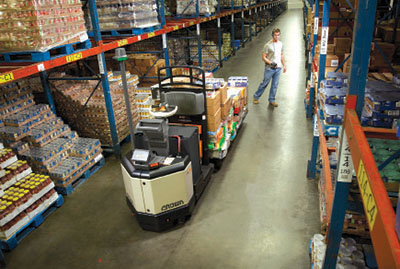 As with the digitization of forklifts and the impact of Moore’s Law on processing power and cost, modern information technology systems are also converging on a seemingly inevitable outcome. In the meantime, the holy grail of forklift automation remains elusive.
As with the digitization of forklifts and the impact of Moore’s Law on processing power and cost, modern information technology systems are also converging on a seemingly inevitable outcome. In the meantime, the holy grail of forklift automation remains elusive.
“In meetings with top executives, they ask ‘why hasn’t it happened yet?’ Versions have been here for years, but broad scale and mass acceptance will come from the standard application, not the unique one. Price points have to get down, and will, and simplicity has to be there,” says Meyer. “At our meetings, we’ve been calling it the smart phone effect. Think of the complexity and capability of that piece of equipment, yet how amazingly comfortable we are with it, how productive we can be, how well we can use, manipulate, even troubleshoot it. Who will bring the smart phone technology to this space?”

Article Topics
Lift Trucks News & Resources
BSLBATT is looking for new distributors and resellers worldwide Hyster recognizes Dealers of Distinction for 2023 Carolina Handling names Joe Perkins as COO Toyota Material Handling North America appoints Mark Taggart as CFO Learn from lift truck service history Toyota Material Handling honors its top forklift dealers in North America Fleet Team expands with strategic acquisition of Forklift Training Systems More Lift TrucksLatest in Materials Handling
Registration open for Pack Expo International 2024 Walmart chooses Swisslog AS/RS and software for third milk processing facility NetLogistik partners with Vuzix subsidiary Moviynt to offer mobility solutions for warehouses Materials Handling Robotics: The new world of heterogeneous robotic integration BSLBATT is looking for new distributors and resellers worldwide Lucas Watson appointed CSO for Körber’s Parcel Logistics business in North America Hyster recognizes Dealers of Distinction for 2023 More Materials HandlingAbout the Author
Subscribe to Materials Handling Magazine

Find out what the world's most innovative companies are doing to improve productivity in their plants and distribution centers.
Start your FREE subscription today.
April 2024 Modern Materials Handling

Latest Resources










